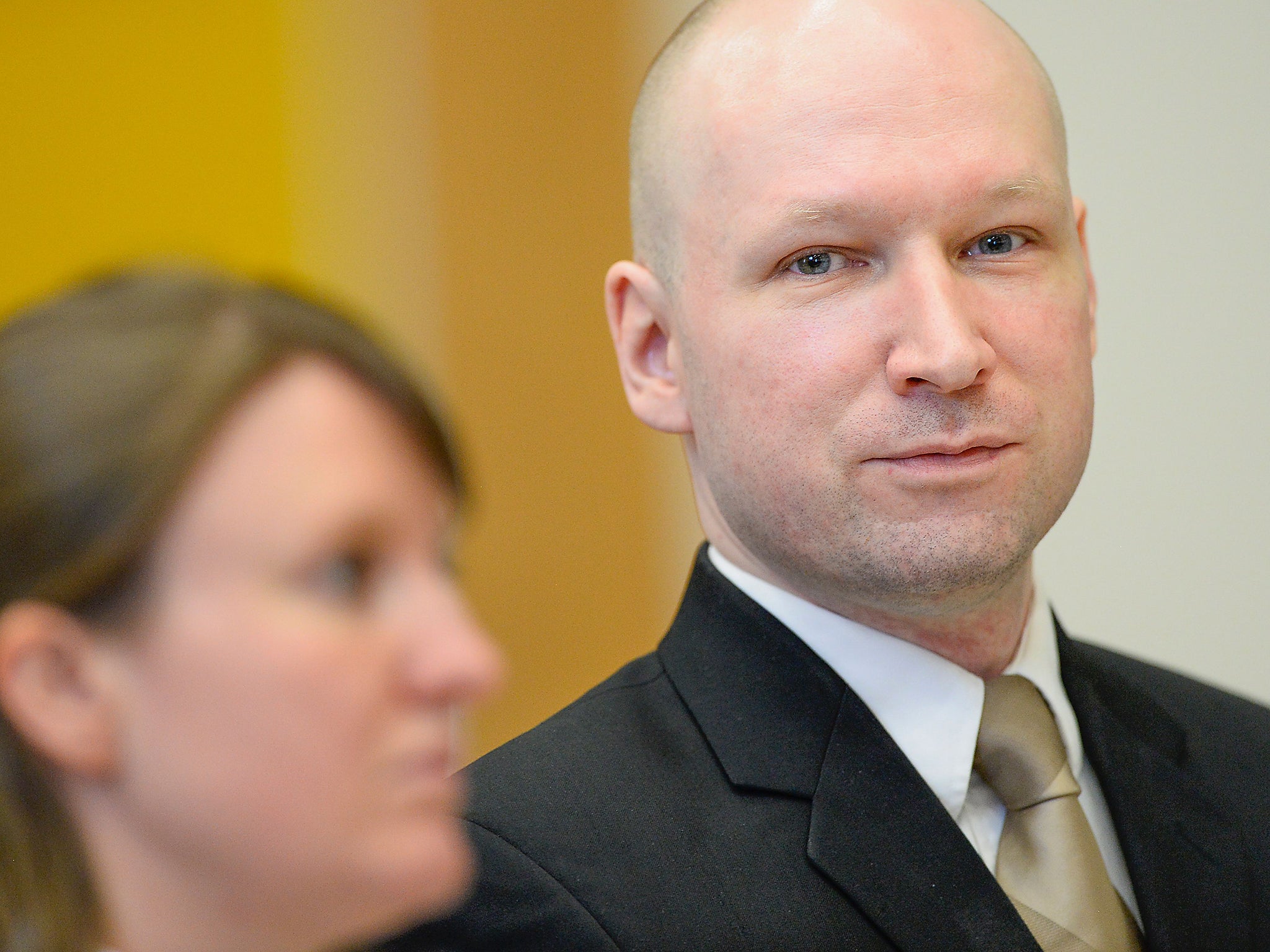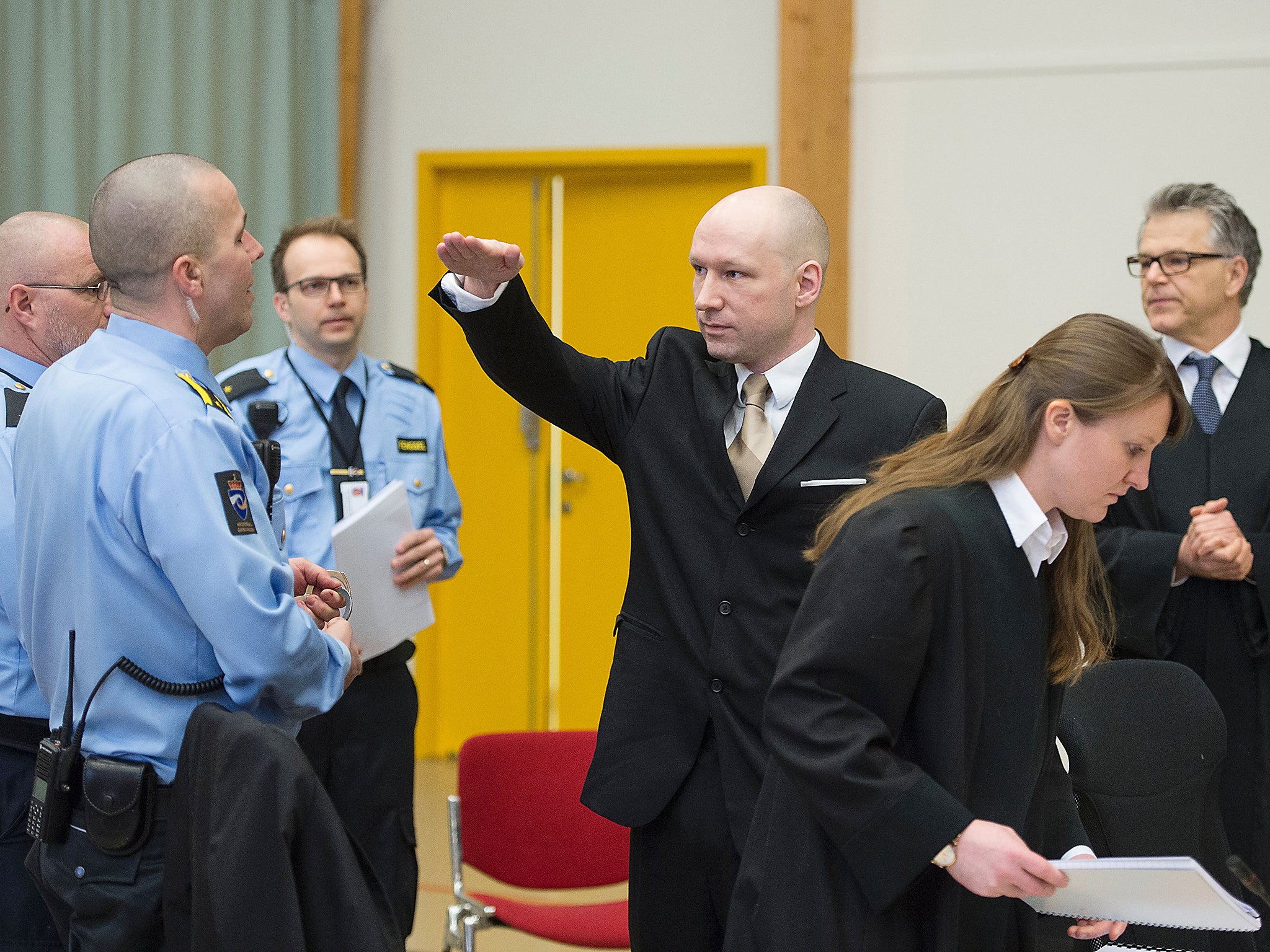The psychiatric disorders that might have driven Anders Breivik to kill
What propels people to commit acts of violence is complex, and cannot simply be blamed on mental health. A range of social factors including one’s status and power must be considered

Your support helps us to tell the story
From reproductive rights to climate change to Big Tech, The Independent is on the ground when the story is developing. Whether it's investigating the financials of Elon Musk's pro-Trump PAC or producing our latest documentary, 'The A Word', which shines a light on the American women fighting for reproductive rights, we know how important it is to parse out the facts from the messaging.
At such a critical moment in US history, we need reporters on the ground. Your donation allows us to keep sending journalists to speak to both sides of the story.
The Independent is trusted by Americans across the entire political spectrum. And unlike many other quality news outlets, we choose not to lock Americans out of our reporting and analysis with paywalls. We believe quality journalism should be available to everyone, paid for by those who can afford it.
Your support makes all the difference.Anders Behring Breivik is serving a long sentence for a terrible crime. On 22 July 2011, the 32-year-old Norwegian bombed government buildings in Oslo and then went on a shooting spree on the island of Utoya, killing 77 people. He was sentenced to 21 years in prison the following year. Why did Breivik kill?
It is not as simple as saying that he was a terrorist supporting an idealised religion, or dismissing him as insane. He himself has claimed that his actions were to save Europe from radical Islam – and that he was motivated by “goodness not evil”. But after studying detailed assessments of the far-right terrorist, as well as Breivik’s own self-published manifesto, we have found that a condition known as “narcissistic decompensation” may have been behind his belief that he was waging a personal and political war.
A “narcissistic decompensation” occurs when someone with a narcissistic personal disorder – a condition with which Breivik has been diagnosed – suffers from a major injury to their self-esteem. An “injury” can take many forms including rejection by one’s peer groups. What happens next is that they begin to isolate themselves from collective thinking, and move into a paranoid disorder. We would not like to speculate as to what it was that caused Breivik’s “decompensation” here: to do so would require a new psychiatric assessment of the shooter.

In Breivik’s case, it has been strongly suggested that in addition to his proven narcissistic disorder, he also had Asperger’s syndrome – though the latter was not formally diagnosed. The two conditions together may form a particularly dangerous combination, making someone much more at risk of taking part in extreme violent behaviour. Similar to previous studies, our research found that there could be a link between narcissistic personality disorder and violence. However, in Breivik’s case, we think that the narcissistic decompensation, which may have occurred at a time when he was relying on an Asperger’s coping mechanism – following a specific routine to help himself through a social situation, for example – could have been the final push that sent him along a violent path.
Although little is known of the warning signs for what makes a mass shooter, the route itself has been well defined in the aftermath. Essentially, the “path towards intended violence” starts with harboured grievances, continuing with the development of an idea that, for example in Breivik’s case, Europe must be saved from terrorism. The person then comes to the conclusion that violence is the only way to remedy a situation. This is followed by research and planning and preparing for the violent actions. After this there is an act of breaching security – Breivik used GPS to scout paths across Utoya island, for example – and finally the attack itself. Narcissistic traits – or narcissism – have already been put forward as a potential risk factor for school shootings. In a study of seven such incidents in German schools, researchers found that three of the four shooters who had received treatment for psychiatric disorders prior to killings exhibited detached symptoms of narcissism. The authors also found narcissistic traits were exhibited in two of the other three offenders. And in one of these two cases, a diagnosis of narcissistic personality disorder would have been met given the symptoms the shooter displayed.
What this indicates is that the prevalence of narcissistic personality disorder in school shooters is higher than in the general population. So narcissism certainly could be a risk factor in these mass shootings. Further studies in the US have found that narcissism has been exhibited in one-fifth to one-seventh of school shooters. It is important to caution here that narcissistic traits are not a necessary condition for motivating a shooting. Likewise, simply having a diagnosis of an autism spectrum disorder combined with narcissistic personality disorder will not by itself necessarily propel an individual on the path to intended violence. There are other factors at play.

There are significant gaps in our understanding of how mass shooters develop. In the case of Breivik, there were several other things that could have contributed to his violent acts. He had a difficult relationship with his mother and his father was absent. Breivik wanted to be a millionaire – and seemed not to care whether this was by legitimate or criminal means. He had his sexual identity questioned, had difficulties dating and had apparently abandoned his pursuit of the “ideal woman”. He was rejected by his peers in elite gaming circles, as well as the political elite who he saw as not sharing his views – despite his plight to “save” Europe. His life experiences up until the day of the shooting can be summed up as a litany of failed attempts to gain positions of status and power, acceptance and admiration from others.

The pathway to violence – and the factors that drive some to become mass shooters – require urgent, detailed investigation. If we can identify early patterns of behaviour that can be recognised and flagged up, we could potentially predict those individuals which are at an increased risk of committing extremely violent acts. Given the higher prevalence of narcissistic traits and autism spectrum disorder (including Asperger’s) found in mass shooters, the overlap between these two requires further analysis across a wider pool of subjects. It could very well be that the co-occurrence of both autism and narcissism is a particularly explosive combination. In the aftermath of mass shootings, the question is always asked “could it have been prevented”? Psychological analysis is just one way we can recognise the warning signs, and stop these atrocities before they ever begin.
This article first appeared on The Conversation (theconversation.com). Clare Allely is a lecturer in psychology at the University of Salford
Join our commenting forum
Join thought-provoking conversations, follow other Independent readers and see their replies
Comments